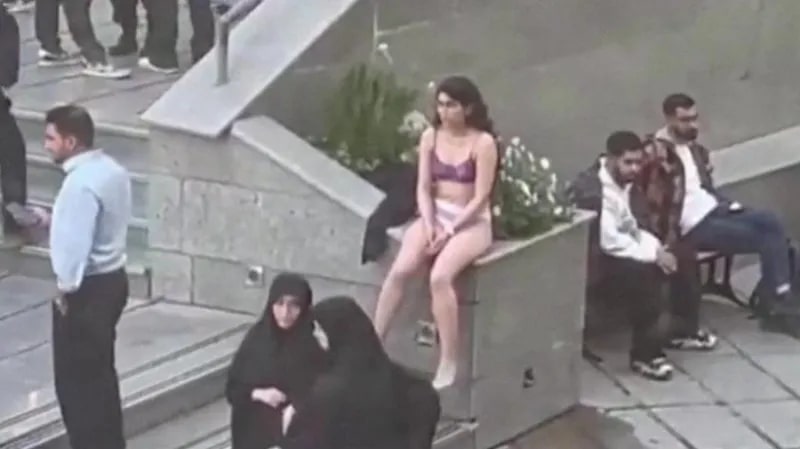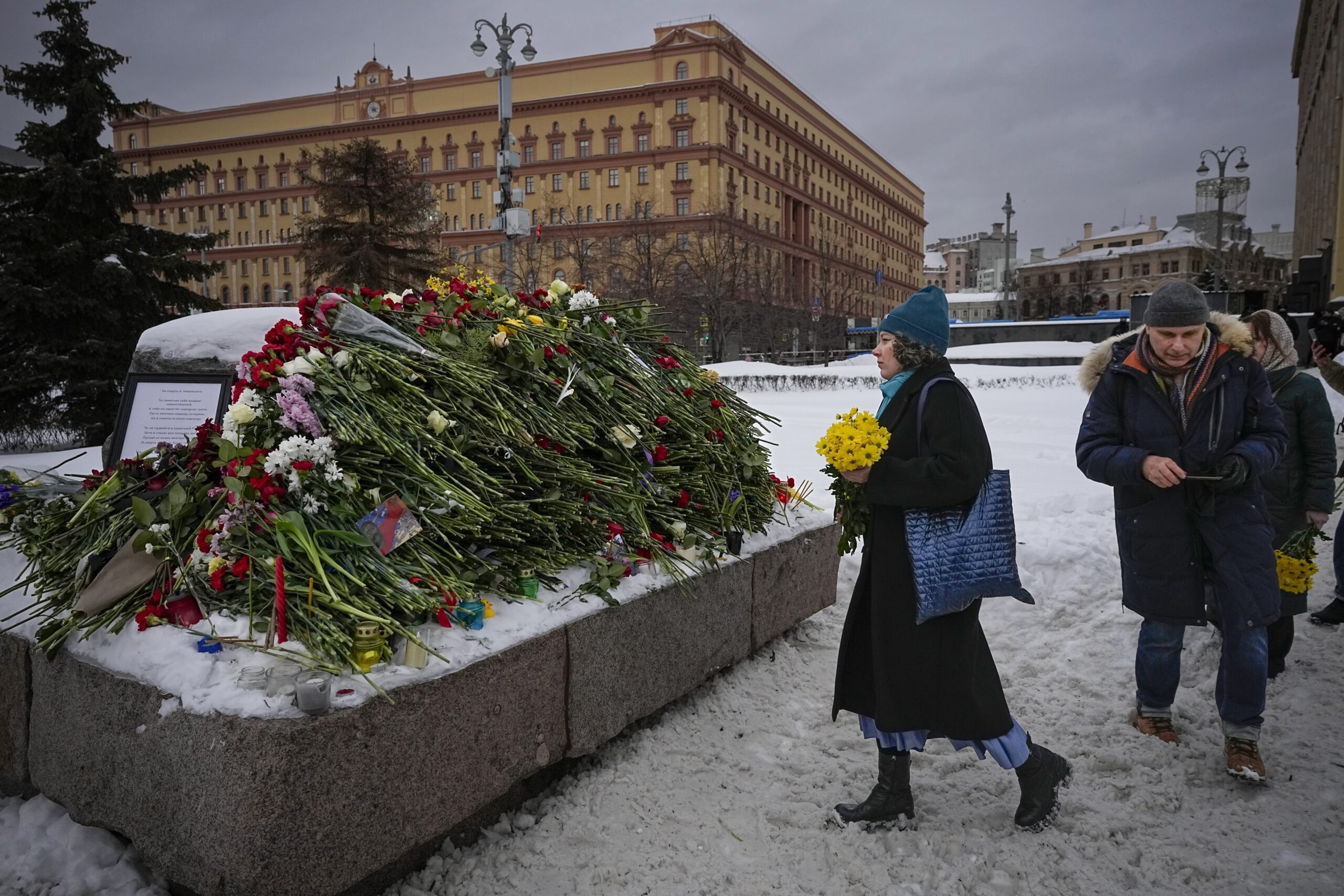(Tehran) – Human rights advocates have called for the release of a woman in Iran who was detained after removing her clothes at a university, reportedly in protest against Iran’s compulsory hijab laws.
A video circulated on social media on Saturday, capturing a woman sitting in her underwear on the steps of the Science and Research Branch of Islamic Azad University in Tehran. She is later seen walking calmly along the street outside the university. A second video reportedly shows her removing the remaining items of her clothing, after which she is detained by plainclothes officers who forcibly escort her into a vehicle.
University officials have since stated that the woman has a “mental disorder” and has been taken to a psychiatric hospital. However, many Iranian citizens on social media question this claim, suggesting instead that her actions were part of the “Woman, Life, Freedom” movement—a symbolic protest in which many women openly defy laws requiring them to cover their hair and wear loose-fitting clothing.
The “Woman, Life, Freedom” movement has grown since the 2022 death of Mahsa Amini, a young Kurdish woman who died in police custody after being detained for allegedly not wearing her hijab properly. Amini’s death sparked widespread protests, during which over 500 people were reported to have been killed across Iran.
The Amirkabir Newsletter, a Telegram channel representing the Iranian student movement, was the first to report this incident. According to its coverage, the woman had a confrontation with university security over her lack of a headscarf, during which she allegedly undressed as the situation escalated. It was also reported that her head was injured during the detention process, leading to bleeding as she was placed in the plainclothes agents’ vehicle and taken to an undisclosed location.
Eyewitnesses told BBC Persian that the woman had entered a university classroom earlier and started filming the students. When questioned by the lecturer, she exited, shouting to those in the room, “I’ve come to save you.”
In response to the incident, Iranian media shared a video of a man with his face blurred, claiming to be her ex-husband. He urged the public not to share the footage out of respect for the woman’s two children, though BBC Persian has been unable to independently verify his identity or statements.
Canada-based women’s rights activist Azam Jangravi, who fled Iran after facing imprisonment for her own protest against the hijab in 2018, noted that families of arrested women are often pressured to declare their loved ones mentally unwell. “My family didn’t do it, but many families under pressure do, thinking it’s the best way to protect their loved ones. This is how the Islamic Republic tries to discredit women, by questioning their mental health,” Jangravi stated.
Amnesty International also addressed the matter, calling for the woman’s immediate and unconditional release. “Pending her release, authorities must protect her from torture and other ill-treatment, and ensure access to family and lawyer. Allegations of beatings and sexual violence against her during arrest need independent and impartial investigations. Those responsible must be held to account,” the organization declared.
The United Nations Special Rapporteur on Iran, Mai Sato, also shared the video online, indicating that she would be monitoring the situation closely, including any response from Iranian authorities.
Narges Mohammadi, an Iranian Nobel Peace Prize laureate currently imprisoned in Iran, voiced her concerns regarding the case. In a public statement, she said, “Women pay the price for defiance, but we do not bow down to force. The student who protested at the university turned her body—long weaponized as a tool of repression—into a symbol of dissent. I call for her freedom and an end to the harassment of women.”




















